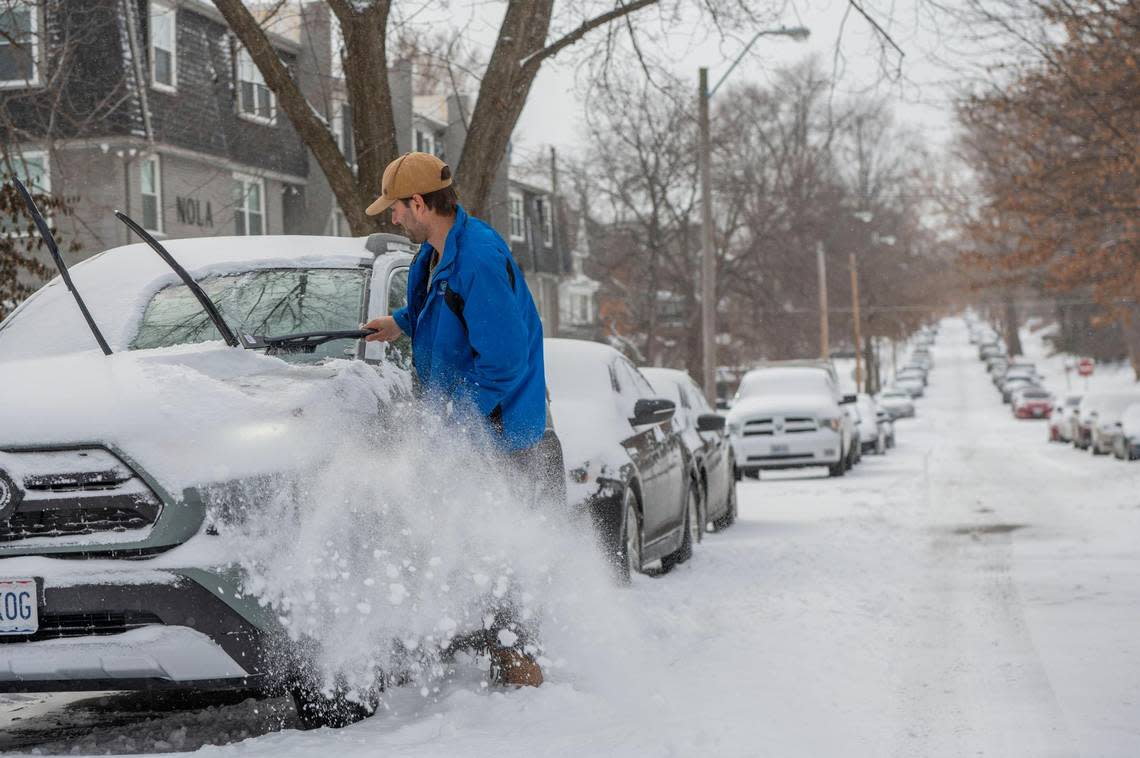Is it legal to drive with snow and ice on your car? Here’s what Pennsylvania law says

Driving in the winter in Pennsylvania can be exhausting, especially when snow and ice coat your car overnight and leave you with a fresh, frosty paint job.
Ever wondered what might happen if you don’t have time to shovel and scrape out your car? You might get on the road sooner, but snow and ice left on your vehicle could obstruct your view and present a larger hazard to those driving around you.
If snow and ice debris on your car falls off and causes an accident or an injury, who is at fault? Here’s what Pennsylvania law has to say.
Can I face trouble if I do not winter debris from my vehicle?
Yes, largely thanks to a recent Pennsylvania law.
Motorists in the commonwealth are required to “make reasonable efforts” to remove snow and ice from their vehicles, including their hoods, trunks and roofs, within 24 hours following “the cessation of the falling snow and ice.” Notably, this does not apply if snow and ice accumulate while a vehicle is in operation or compliance with the regulation (particularly for mass transit vehicles, school buses or motor carrier vehicles) would threaten a driver’s health and safety.
Pennsylvania law explicitly states law enforcement officials in the commonwealth can pull drivers over if accumulated snow and ice on their cars “pose a threat to persons or property.”
Simply violating Pennsylvania law by leaving winter debris on a vehicle can result in a fine of $50 for each offense.
Drivers risk additional fines and legal trouble if dislodged or fallen snow and ice “strikes another vehicle or pedestrian, causing death or serious bodily injury,” Pennsylvania law says. For each offense, vehicle operators can face a minimum fine of $200 that could reach up to $1,500.
Former Pennsylvania Gov. Tom Wolf signed this snow debris regulation into law in July 2022. Introduced as a bill named “Christine’s Law,” it recognizes Christine Lambert, a Northampton County woman who died on Christmas Day in 2005 when a large piece of ice dislodged from a passing truck and crashed through her windshield.
State Sen. Lisa Boscala of Lehigh and Northampton counties introduced the bill, which became Act 90 of 2022. After it received the former governor’s signature, Boscala said the new law should help promote safety in Pennsylvania.
“Act 90 is first and foremost about public safety,” Boscala said in a statement. “The goal of Christine’s Law is to increase public awareness and make people more vigilant about clearing snow and ice from their vehicles so that the tragedy that befallen the Lamberts doesn’t happen to other families.”
Before “Christine’s Law,” Pennsylvania law penalized drivers only when dislodged snow or ice resulted in serious bodily harm.
Can Pennsylvania drivers run a red light that won’t turn green? There’s a law for that
Safe winter driving in Pennsylvania
The Pennsylvania Department of Transportation says all drivers should eliminate unnecessary travel if winter weather is in the forecast. However, those who must hit the road should try to keep the following safety tips in mind:
Always listen to weather and travel advisories. If you don’t need to travel in bad weather, stay home.
Keep your gas tank at least halfway full.
Beware of roads that look wet but are frozen. This is sometimes called “black ice.”
Use extra caution on ramps and bridges, where ice can form more easily without warning.
Be sure to keep a cell phone on your person and a winter emergency travel kit in your car.
Avoid sudden stops and starts, and be sure to slow down and increase your following distance from other vehicles.
Keep your headlights on if your wipers are on. Additionally, use your low beams in bad weather, especially when snow is heavy or blowing due to strong winds.
Do not park or abandon your vehicle on a snow emergency route.
Do not pass or merge between trucks in a plowing line (such as several trucks plowing side by side).
Make sure someone else knows where you are going and when you are expected to arrive. Someone will know to look for you if you run into an emergency or need help.
If you do become stranded, stay with your vehicle until help arrives. Keep your tailpipe clear and run the engine every hour or so.
PennDOT maintains several guides regarding winter driving and safety on its website. There, you can browse several brochures, diagrams and fact sheets that can help keep you safe on the roads this winter.


